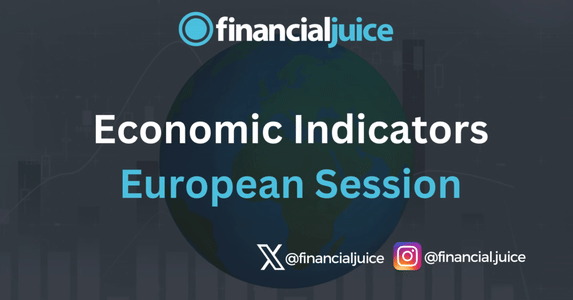
Week Ahead: Economic Indicators (Europe)
Wednesday
PMI data from European nation (manufacturing, Services & Composite)
Manufacturing:
Based on monthly questionnaire surveys of selected companies, the Purchasing Managers’ Manufacturing Index (PMI) offers an advance indication on month-to-month activity in the private sector economy by tracking changes in variables such as output, new orders, stock levels, employment and prices across manufacturing industries. The final index for the current month is released roughly a week after the flash.
Services:
The Services Purchasing Managers’ Index (PMI) provides an estimate of service sector business activity for the preceding month by using information obtained from a representative sector survey incorporating transport and communication, financial intermediation, business services, personal services, computing and IT and hotels and restaurants. Results are synthesised into a single index which can range between zero and 100. A reading above (below) 50 signals rising (falling) activity versus the previous month and the closer to 100 (zero) the faster is activity growing (contracting). The data are compiled by the Chartered Institute of Purchasing and Supply (CIPS) and Markit.
Composite:
The Composite PMI Index measures the activity level of purchasing managers in both sectors (manufacturing and services). A reading above 50 indicates expansion in the sector; a reading below 50 indicates contraction.
What to expect:
A higher than expected reading should be taken as positive/bullish for the GBP/EUR, while a lower than expected reading should be taken as negative/bearish for the GBP/EUR.
04:00 ET
German IFO:
Expectations
German Business Expectations rates the expectations of businesses in Germany for the following six months. It is a sub-index of the German Ifo Business Climate Index.
Current Conditions:
The German Current Assessment rates current business conditions in Germany, without considering future expectations. It is a sub-index of the German Ifo Business Climate Index.
Business Climate:
The German Ifo Business Climate Index rates the current German business climate and measures expectations for the next six months. It is a composite index based on a survey of manufacturers, builders, wholesalers and retailers. The index is compiled by the IFO Institute for Economic Research.
What to expect:
A higher than expected reading should be taken as positive/bullish for the EUR, while a lower than expected reading should be taken as negative/bearish for the EUR.
08:15 ET
ECB Interest Rate Decision
The European Central Bank (ECB) sets monetary policy for all members of the Eurozone. The highest decision-making body is the Governing Council which comprises the six members of the Executive Board and the 19 presidents of member central banks. Policy meetings take place roughly every six weeks but, due to the sheer number of participants, a rotation system has been introduced so that the total number of votes is capped at twenty-one.
The most traditional operations are what we call the Main Refinancing Operations (MRO). When liquidity is needed, a bank can borrow directly from the ECB. Every week, banks of the Eurozone go (virtually) to the ECB desk to borrow money at the refinancing rate fixed by the ECB. The loan is made under the form of a Repurchase Operation (Repo). The bank sells security assets to the ECB and borrows money. One week later, the bank gives the money back with interest to the ECB and recovers its security assets.
What to expect:
The level of interest rates affects the economy. Higher interest rates tend to slow economic activity; lower interest rates stimulate economic activity. Either way, interest rates influence the sales environment. In the consumer sector, few homes or cars will be purchased when interest rates rise. Furthermore, interest rate costs are a significant factor for many businesses, particularly for companies with high debt loads or who have to finance high inventory levels. This interest cost has a direct impact on corporate profits. The bottom line is that higher interest rates are bearish for the stock market, while lower interest rates are bullish.




